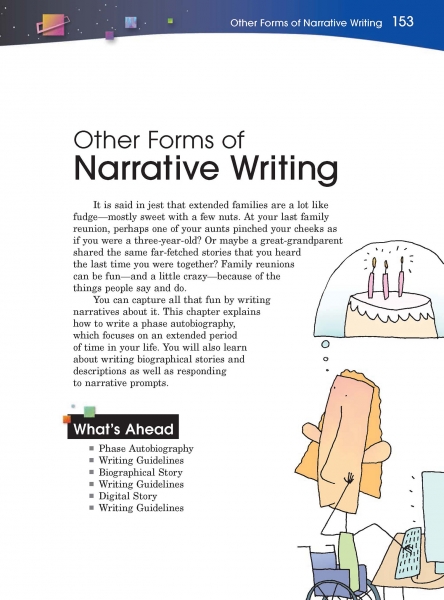Page 153 from

Start-Up Activity
Challenge your students to define the word “narrative.” One possible definition is “a story about something that actually happened.” Then ask students to offer examples of narratives. Suggestions could include personal narratives, news stories, biographies, history books, documentaries, and many other forms, both large and small. Tell your students that they will be experimenting with other forms of narrative writing.
Think About It
“I have a belief in a narrative that is bigger than me, that is alive and I trust will work itself out.”
—Joss Whedon

Start-Up Activity
Challenge your students to define the word “narrative.” One possible definition is “a story about something that actually happened.” Then ask students to offer examples of narratives. Suggestions could include personal narratives, news stories, biographies, history books, documentaries, and many other forms, both large and small. Tell your students that they will be experimenting with other forms of narrative writing.
Think About It
“I have a belief in a narrative that is bigger than me, that is alive and I trust will work itself out.”
—Joss Whedon




